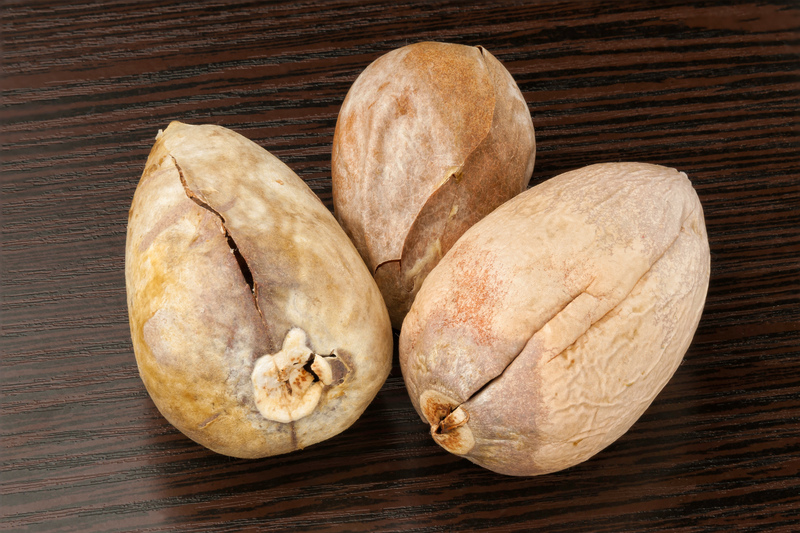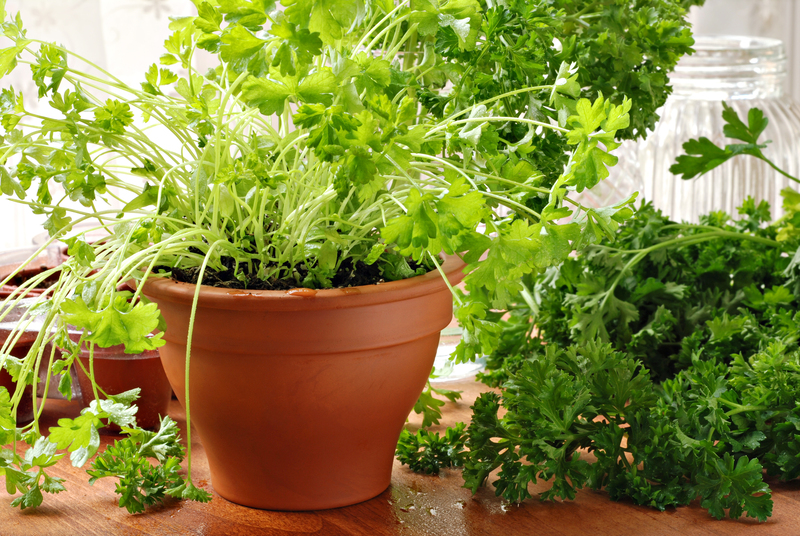Design Essentials for a Kid-Safe Backyard
Posted on 07/09/2025
Design Essentials for a Kid-Safe Backyard: Your Complete Guide
A backyard can be much more than a patch of grass behind your house--it's a sanctuary, a playground, a classroom, and most importantly, a safe haven for children to play, learn, and grow. Creating a kid-safe backyard requires careful planning and implementation to ensure every element encourages fun while prioritizing child safety. In this comprehensive article, we'll explore the essential design principles for a backyard safe for kids, covering layout, materials, protective measures, and practical tips for an engaging yet secure outdoor environment.

Why Is a Kid-Safe Backyard Essential?
Accidents can happen in a matter of seconds, and children are naturally curious, adventurous, and often fearless. A child-friendly backyard design allows parents peace of mind, knowing that the outdoor space is specifically created to minimize risks. It also empowers kids to experience the joy of the outdoors, which is crucial for their physical, emotional, and social development.
- Health Benefits: Outdoor play helps with physical fitness, coordination, and vitamin D absorption.
- Mental Stimulus: Nature-inspired environments promote curiosity and creativity.
- Social Growth: Safe play zones encourage friendship and teamwork.
Planning a Safe Backyard Design for Kids
Designing a child-safe backyard begins with a thoughtful plan. Before choosing trees, toys, or even the color of your fencing, it's vital to assess your unique backyard landscape and list any potential hazards. Walk the area at different times of the day so you can identify everything from uneven terrain to excessive sun exposure.
Analyze Your Space
- Identify hazards: Look out for sharp edges, exposed roots, slippery slopes, thorny plants, and proximity to streets or water features.
- Sun and shade mapping: Note areas that experience harsh sunlight or are entirely shaded. This will help you place play areas for ideal comfort and safety.
- Accessibility: Ensure pathways are clear and accessible for both little kids and grown-ups.
Legal Requirements & Local Codes
Check with your local municipality on regulations related to fencing, pool covers, playground equipment, and landscaping. Complying with safety standards is not just good practice--it's also a legal responsibility that can protect you from liability in the event of an accident.
Key Design Essentials for a Child-Friendly Backyard
1. Secure Fencing and Gates
A strong boundary is the first and most critical backyard safety feature. Properly installed fences and gates keep children inside your property and unwanted visitors--both human and animal--out.
- Fence height: Select fencing at least 4-6 feet tall to prevent climbing or jumping over.
- Safe materials: Opt for splinter-free wood, vinyl, or powder-coated metal with smooth edges.
- Self-closing, self-latching gates: Use child-proof gates, especially on pools or areas where supervision is crucial.
- Regular maintenance: Inspect for gaps, damage, or rust that could compromise security.
Tip: Decorative fencing, such as picket or privacy fence, can enhance the look of your backyard while providing peace of mind for parents.
2. Softer, Safer Ground Coverings
Falls are one of the most common causes of injury. Choosing the right backyard surface for children can significantly reduce bumps, bruises, or worse.
- Grass: Natural grass provides cushioning but may get muddy or host insects.
- Rubber mulch: Made from recycled tires, this innovative solution absorbs impact around play areas.
- Playground tiles: Interlocking rubber or foam tiles offer a soft, even surface ideal for high-activity zones.
- Artificial turf: A low-maintenance, mud-free option that remains plush and green all year round.
- Pea gravel or wood chips: Be aware of choking hazards for younger children and the need for regular raking.
*Never use concrete, stone, or hard-packed dirt in main play zones for young kids.
3. Safe Play Equipment Installation
One cornerstone of a family-friendly backyard is the addition of engaging play equipment. Whether you choose a swing set, slide, or climbing wall, safety should always come first.
- Certification: Only buy equipment that meets ASTM (American Society for Testing and Materials) or CPSC (Consumer Product Safety Commission) standards.
- Anchoring: Properly anchor swings, trampolines, and slides to avoid tipping.
- Space clearance: Leave adequate space around each installation according to manufacturer guidelines to avoid accidental collisions.
- Regular inspection: Check for worn ropes, rusty screws, or sharp edges.
- Age-appropriate options: Choose structures suitable for your children's ages and stages.
Trampolines require extra attention: Always use safety nets, surround padding, and restrict jumping to one person at a time.
4. Smart Landscaping Choices
Careful plant selection and creative landscaping can make your outdoor space safe for kids while adding beauty and biodiversity.
- Avoid toxic plants: Steer clear of species such as oleander, foxglove, or castor bean. Instead, choose non-toxic flowers and shrubs like sunflowers, marigolds, and lavender.
- Smooth over edges: Landscape with rounded boulders, mulch, or edging instead of sharp stones or metal borders.
- Visibility: Trim bushes to maintain clear sight lines from the house to all corners of the yard.
- Turf alternatives: Ground covers like clover, thyme, or moss can be soft underfoot and require less mowing.
- Allergy awareness: Select low-pollen plants if your family is sensitive to seasonal allergies.
5. Water Safety Is Paramount
Any water feature--from pools and ponds to birdbaths and fountains--demands special attention for a kid-safe garden. Drowning can occur quickly, silently, and in shallow water.
- Pool fencing: Install a fence with a self-latching gate entirely around pools or spas.
- Alarms: Use pool alarms or door alarms for extra protection.
- Supervision: Never leave children unattended near water, even for a moment.
- Pond covers: Use secure grates over decorative ponds or fountains.
- Remove standing water: Eliminate buckets, covers, or empty plant pots that can collect rainwater.
Teaching your children to swim is one of the most valuable investments you can make in their safety.
6. Shade Solutions for Sun Protection
Prolonged sun exposure can lead to sunburn or heatstroke. Integrate smart shade solutions into your child-safe backyard design to keep play zones cool and protect delicate skin.
- Permanent structures: Pergolas, gazebos, or retractable awnings provide stylish shelter.
- Shade sails: Available in various shapes and colors, they're a modern and flexible shading option.
- Natural shade: Plant fast-growing trees or tall bushes strategically to create dappled sunlight.
- Umbrellas and tents: Offer temporary, movable solutions for changing play zones.
Encourage kids to wear hats and sunscreen even with these protective measures in place.
7. Lighting and Visibility
A well-lit yard not only extends safe play into the evening but also discourages intruders and helps prevent trips and falls. Thoughtful lighting design is a key aspect of any safe backyard for children.
- Pathway lighting: Install low-voltage LED lights along walkways and steps.
- Motion sensors: Place these near entrances and play areas for hands-free illumination.
- Spotlighting: Use focused lights to brighten up play equipment after dark.
- Solar lights: An energy-efficient and easy-to-install option for gardens and patios.
Extra Tips for a Safe and Engaging Backyard
Age-Zoned Play Areas
If your children are of different ages, consider dividing your safe backyard into areas dedicated to toddlers, school-age kids, and teens. This allows for age-appropriate fun while keeping risk minimal.
- Toddler zone: Soft surfaces, low play equipment, and sensory gardens.
- School-age area: Swings, climbing frames, sandboxes, or sports courts.
- Teen retreat: Hangout spots, outdoor games like ping-pong, or a mini fire pit with plenty of supervision.
Storage and Organization
Cluttered spaces create unnecessary hazards. Invest in secure, weather-proof storage for garden tools, toys, and chemicals. Make sure any dangerous items are out of reach or locked away.
- Storage benches: Double as seating and toy storage.
- Locked sheds: Keep chemicals, sharp tools, and grilling accessories locked up tight.
- Outdoor cabinets: Useful for sports gear and gardening supplies.
Pest and Allergen Control
Stinging insects, ticks, and allergens can pose health risks for kids. Reduce exposure by:
- Keeping grass mowed and weeds trimmed.
- Eliminating standing water that attracts mosquitoes.
- Using safe bug repellents and organic pest control methods.
Emergency Preparedness
Even the safest child-friendly garden can't prevent every accident. Keep a first-aid kit near the back door, and teach kids how to call for help. Have emergency contact numbers posted where they're easy to find.
Kid-Safe Backyard Design: Creating Fun and Safe Zones
The most successful childsafe backyard is an inviting blend of fun, creativity, and robust safety features. Here are a few favorite ideas for engaging, secure play areas:
- Nature-inspired play: Build a sensory garden with fragrant herbs, musical wind chimes, and colorful butterfly-attracting flowers for interactive learning.
- Adventure paths: Create winding stone or woodchip paths with stepping stones for imaginative play and obstacle courses.
- Mud kitchens or sandboxes: Foster creativity and tactile experiences in well-shaded, easy-to-clean corners.
- Water play: Use splash pads or shallow, supervised wading pools during hot months--never leaving children unattended.
- Outdoor art wall: An easy-to-clean chalkboard or mural wall invites artistic expression and can be a backyard showpiece.
- Mini gardens: Raised beds or large planters allow kids to grow their own food, learn responsibility, and connect with nature in a safe, contained space.

Ongoing Maintenance for a Kid-Safe Yard
A truly safe backyard for kids depends on ongoing care and vigilance. To keep your outdoor oasis secure:
- Conduct monthly inspections of equipment, surfaces, and fencing for wear and tear.
- Ensure all locks, gates, and alarms function properly.
- Prune trees to avoid falling branches during storms.
- Replenish soft surfaces like mulch and sand as needed.
- Keep up-to-date on plant and insect safety and remove hazards promptly.
Conclusion: Peace of Mind in a Playful Outdoor Haven
Designing the perfect backyard safe for children doesn't require sacrificing style or fun. By combining thoughtful planning, mindfully chosen materials, age-appropriate activities, and ongoing maintenance, you'll create a child-safe backyard where kids can play freely--and parents can feel confident about their safety. With these Design Essentials for a Kid-Safe Backyard in mind, your outdoor space will offer adventure, discovery, and joy for your family for years to come.
Ready to transform your backyard? Start with safety, and fun will follow!

